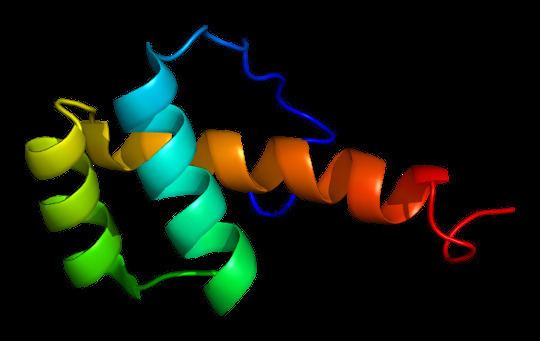Species Human Entrez 145258 | Human Mouse Ensembl ENSG00000133937 | |
 | ||
Aliases GSC, SAMS, goosecoid homeobox External IDs MGI: 95841 HomoloGene: 7744 GeneCards: GSC | ||
Homeobox protein goosecoid is a protein that in humans is encoded by the GSC gene. This gene encodes a member of the bicoid subfamily of the paired (PRD) homeobox family of proteins. The encoded protein acts as a transcription factor and may be autoregulatory. A similar protein in mice plays a role in craniofacial and rib cage development during embryogenesis.
Contents
Koller's sickle is the first to express the chick homeobox gene goosecoid (GSC).
Function
The GSC gene defines neural-crest cell-fate specification and contributes to dorsal - ventral patterning. Over activation in Xenopus promotes dorso-anterior migration and dorsalization of mesodermal tissue of the cells along with BMP-4. Conversely, loss-of-functions analysis indirectly prevented head formation in Xenopus and head defects in zebrafish. Although, knock-out studies in mice showed that the GSC gene is not required for gastrulation but there is still reduction of the base of the cranium. A mutation in the GSC gene in Drosophila is lethal.
Gsc gene promotes the formation of Spemann’s Organizer. This organizer prevents BMP-4 from inducing the ectoderm in the future head region of the embryo to become epidermis; it instead allows the future head region to form neural folds, which will eventually turn into the brain and spinal cord. For normal anterior development to occur, Spemann’s organizer cannot express the Xwnt-8 or BMP-4 transcription factors. Gsc directly represses the expression of Xwnt-8 while indirectly repressing BMP-4. The inhibition of Xwnt-8 and BMP-4 ensures that normal anterior development, promoted by Spemann’s organizer, can occur.
The expression of Gsc occurs twice in development, first during gastrulation and second during organogenesis. Gsc is found in high concentrations in the dorsal mesoderm and endoderm during gastrulation. The later expression of Gsc is confined to the head region. In the Xenopus, cells that express Gsc become the pharyngeal endoderm, the head mesoderm, ventral skeletal tissue of the head, and the notocord.
Mutations
A mutation in the GSC gene causes short stature, auditory canal atresia, mandibular hypoplasia, and skeletal abnormalities (SAMS). SAMS was previously thought to be an autosomal-recessive disorder but studies with molecular karyotyping and whole-exome sequencing (WES) has shown otherwise.
Mutations in the Gsc gene can lead to specific phenotypes resulting from the second expression of the Gsc gene during organogenesis. Mice knock-out models of the gene express defects in the tongue, nasal cavity, nasal pits, inner ear, and external auditory meatus. Neonate mice born with this mutation die within 24 hours due to complication with breathing and sucking milk, resulting from the craniofacial abnormalities caused by the mutation. Mutations to the Gsc gene in humans can lead to a condition known as SAMS syndrome, characterized by short stature, auditory canal atresia, mandibular hypoplasia, and skeletal abnormalities.
Role in cancer development
Due to its role as a transcription factor in cell migration during embryonic development, GSC has been looked into as a potential role-player in cancer development and metastasis, since embryonic development and cancer development share similar characteristics. GSC, along with other transcription factors like Twist, FOXC2, and Snail, induce epithelial to mesenchymal transitions by regulating the cell adhesion proteins E-cadherin, α-catenin and γ-catenin expression in epithelial cells. Studies have shown that in highly metastatic ovarian, lung, breast, and other cancer cells, GSC is highly expressed early in the progression of the tumor. Furthermore, high levels of GSC expression in cancer cells correlates with poor survival rates and thus can be used as a prognostic tool. High expression of GSC also correlates with the chemoresistance of the cancer. Therefore, GSC “primes cells for the expression of aggressive phenotypes” and “may be the most potential biomarker of drug response and poor prognosis.”
